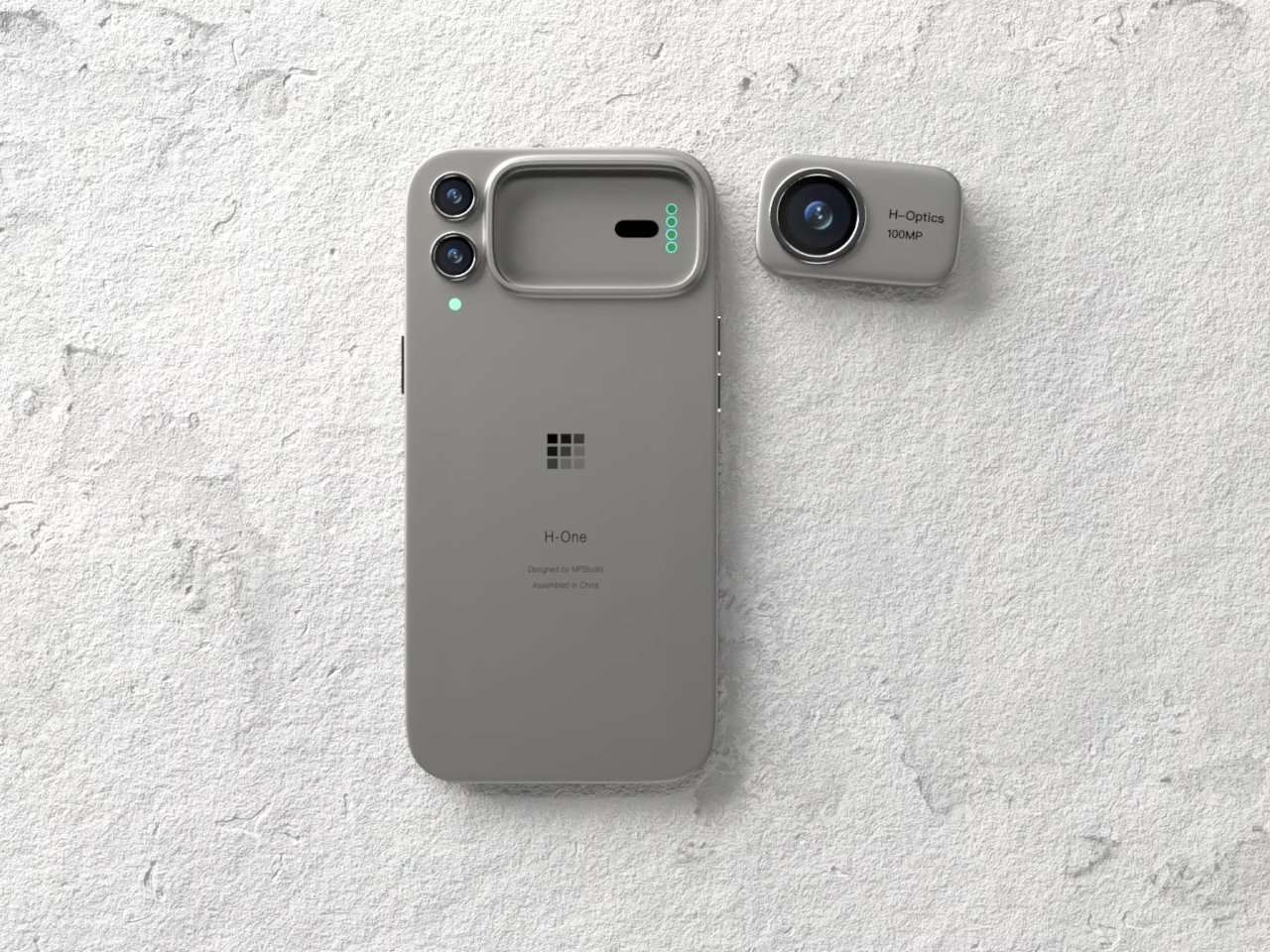The modular smartphone dream feels like ancient history at this point. Google’s ambitious Project ARA never made it to market, and LG’s modular G5 experiment crashed and burned so spectacularly that most manufacturers decided swappable phone components were a dead end. Yet somehow, the idea of customizing your device with interchangeable parts refuses to completely disappear.
Despite the technical nightmares and market failures, designers keep returning to the modular concept because the core appeal remains undeniable. Being able to swap out phone components for different functionality sounds amazing in theory, even if reality keeps proving otherwise. The latest attempt comes from the H-One Pro concept, which takes a more focused approach to modularity.
Designer: Mechanical Pixel
Rather than trying to make the entire phone modular like Project ARA attempted, the H-One Pro limits the swappable components to one specific section. There’s a removable rectangular block on the back of the device, positioned right next to the dual camera setup. This single modular bay handles all the customization possibilities without requiring the complex engineering that doomed previous attempts.
The default configuration includes a camera module featuring a massive 1-inch sensor, which would deliver significantly better image quality than typical smartphone cameras. When you don’t need that level of photography performance, you can simply pop out the camera block and replace it with something more useful for your current situation.
The most practical alternative might be the extra battery module, which adds 2,600mAh of capacity to your phone. This eliminates the need to carry separate power banks, since you can just swap in extra juice when you know you’ll be away from chargers for extended periods. It’s a much more elegant solution than external battery packs that dangle from charging cables.
Storage expansion gets a similar treatment with a 256GB module that replaces the need for microSD card slots. While this works better for file transfers than permanent storage expansion, it offers a cleaner way to move large amounts of data between devices without dealing with tiny memory cards that love to disappear.
More creative options include speaker modules for better audio, LCD screens for additional display space, or even E Ink panels for always-on information. The concept also allows for purely cosmetic blocks made from different materials like wood, brass, or custom branding elements, letting users personalize their device’s appearance.
The H-One Pro approach feels more realistic than previous modular attempts because it acknowledges the technical limitations while still delivering meaningful customization. By focusing on a single swappable component rather than trying to make everything modular, the concept avoids the complexity issues that killed earlier projects.
Whether this more restrained approach to modularity could actually work in practice remains to be seen. The smartphone industry has moved toward sealed, integrated designs for good reasons, and consumer interest in modular devices has proven limited. Still, concepts like the H-One Pro show that the modular phone dream continues to evolve, even if it hasn’t quite figured out how to become reality yet.
The post H-One Pro Concept Keeps the Modular Phone Dream Alive first appeared on Yanko Design.

